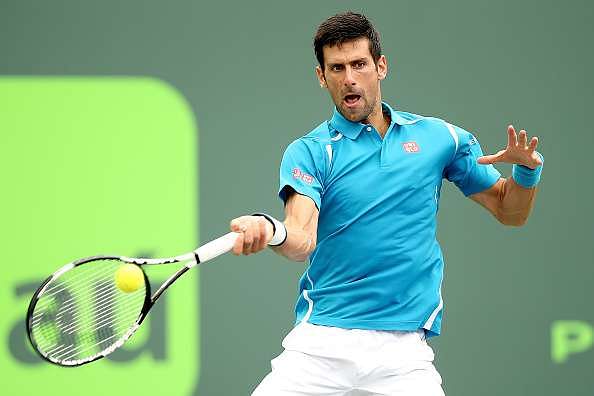
The big question: Why women deserve equal pay in tennis
Novak Djokovic is under fire yet again and this time, the matter is a ‘very delicate and sensitive’ one. The decades-old debate that became increasingly significant with time has been initiated yet again, and the world number 1 finds himself in the epicenter of this issue.
The topic was initiated by Raymond Moore, the tournament director of the Indian Wells at the time, when he said:
“When I come back in my next life I want to be someone in the WTA because they ride on the coattails of the men”
The statement became even worse when he mentioned that:
“If I was a lady player, I’d go down every night on my knees and thank God that Roger Federer and Rafa Nadal were born because they have carried this sport. They really have.”
Novak Djokovic was also caught in the controversy when offered his take on the issue:
“I think that our men’s tennis world, ATP world, should fight for more, because the stats are showing that we have much more spectators on the men’s tennis match.”
He further said
“who attracts more attention, spectators, who sell more tickets and stuff like that, in relation to that it has to be fairly distributed.”
These statements by the world number 1 were followed with a huge backlash from a number of female tennis players. All the way from Billie Jean King, who started the fight for equal pay and equal rights for women, to Martina Navratilova and Serena Williams spoke out on the issue.
It is fair to say that Djokovic’s statements were not interpreted in the right way as he also mentioned that he was completely in support of women’s empowerment.
Here is my take on this debate:
5 sets vs 3 sets
The main argument that is thrown into the face of every equal pay supporter is that men play a best of five sets at Grand Slams whereas women play a best of three. The primary thinking behind this statement is the assumption that the number of sets played is directly related to the effort put in by the player.
This assumption, however, is not always true. If it were true, it would also imply that the number of games in the match also indicate the effort put in by the player. In tennis, the eccentricity of the scoring system makes it nearly impossible to accept that statement.
Even if this statement were true, former WTA chairman Stacey Allaster has repeatedly said that women are willing to play best-of-five set matches. The ITF is the organisation that conducts the Grand Slam tournaments, and women have no say in this matter.
This makes it clear that the common belief that women are not strong enough, both mentally and physically, to play five sets, is not true.
A common example that is cited to support this statement is that the 2005 Wimbledon final of the WTA lasted 45 minutes longer than that of the ATP.
This should settle the debate over best of five and best of three set matches.
Men attract more spectators
Novak Djokovic has given voice to the opinion held by many others in the tennis world that the ATP attracts more attention, more viewership and hence deserves a larger piece of the cake, a larger amount of the money.
This statement, however, is nuntrue, proven during many occasions. One example of which is that the tickets to 2015 US Open final for the women were sold out before that of the men.
The reality is that spectators come to watch quality tennis. They love the sport for its unpredictability and excitement and not on the basis of gender. Both the ATP and the WTA are moving on a handful of global stars that are the face of the game.
Viewers connect with the players for their personality, their on-court demeanor and their stories of life. It is falling very low to believe that viewers connect with players because they are male or female.
Sponsors
The ATP might bring in more sponsors but the fact that every player, no matter whether they are female or male, whether a top 10 player or a top 100 player or from Asia or from the USA has to hire coaches and staff, consider traveling expenses, pay for hotel bookings and undertake every one of the expenses a tennis player must incur.
These expenses are universal and not only for the male players. Thus, the statement that men should earn more is weak and shallow.
The more important and urgent concern must be put on the debate that players who get knocked out in the early stages of the tournament should get more money. This will encourage them to play more, practice more and strive for more.
This will also help in removing the deadly infection of betting, which fortunately, is not so serious in the sport of tennis at the moment, but will become more relevant if not removed at the earliest.
This, I believe, it is this debate that should get more focus and not the debate that everyone is talking about at the moment.
